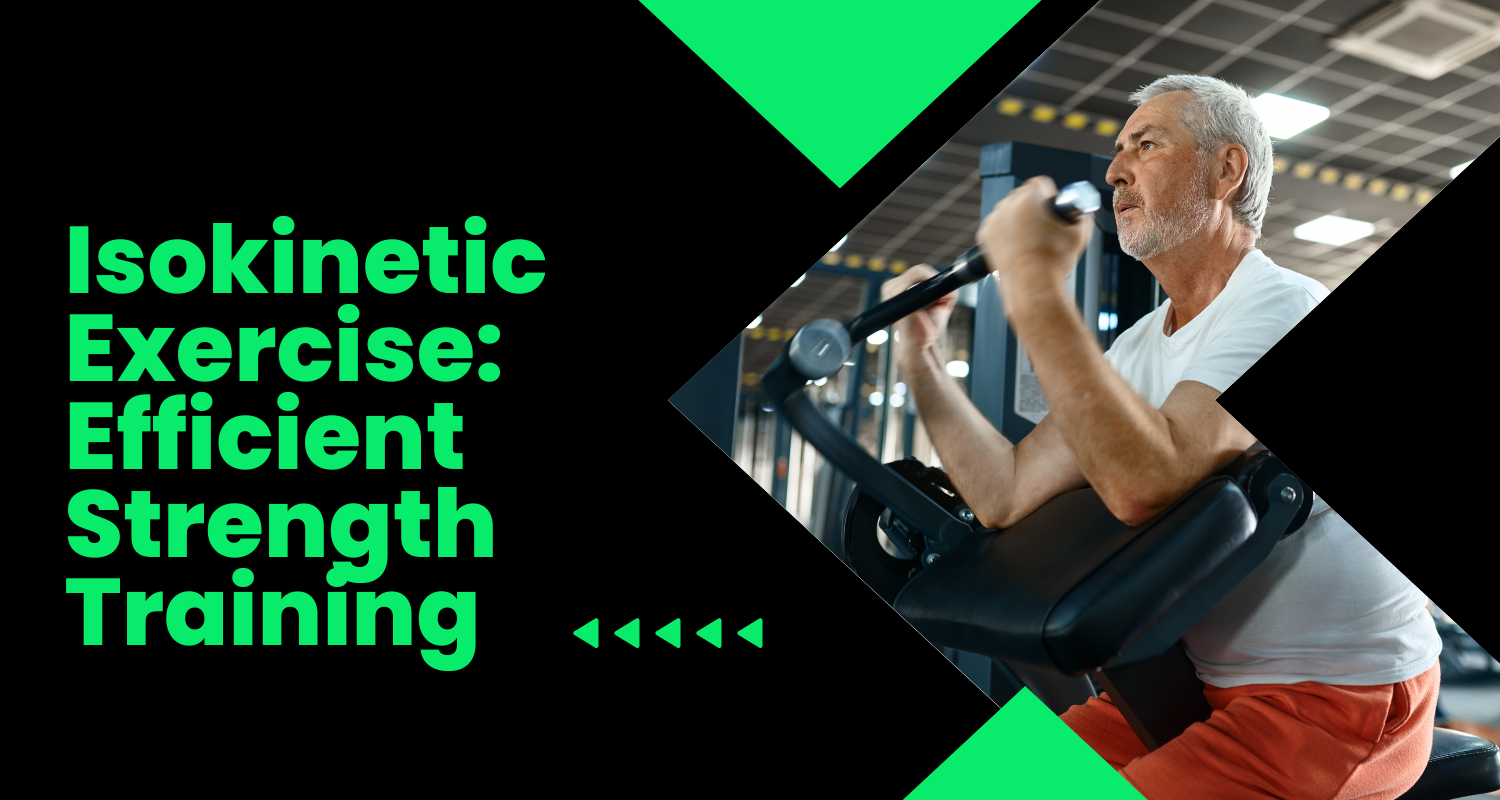Isokinetic Exercise: The Key to Efficient Strength Training

In today's fast-paced world, staying fit and healthy has become a top priority for many.
As people seek effective ways to build strength and improve their physical fitness, isokinetic exercise has gained popularity.
In this comprehensive guide, we will explore the world of isokinetic exercise, its benefits, techniques, and how you can incorporate it into your fitness routine.
Table of Contents
- Introduction to Isokinetic Exercise
- Understanding the Science Behind Isokinetic Exercise
- Benefits of Isokinetic Exercise
- Types of Isokinetic Machines
- Setting Up Your Isokinetic Workout
- Performing Isokinetic Exercises
- Targeted Muscle Groups
- Isokinetic vs. Isotonic Exercise
- Safety Precautions
- Monitoring Your Progress
- Sample Isokinetic Workout Routine
- Isokinetic Exercise for Rehabilitation
- Isokinetic Exercise for Athletes
- Common Misconceptions
- Conclusion
Introduction to Isokinetic Exercise
Isokinetic exercise is a specialized form of strength training that focuses on maintaining a constant speed of movement throughout an entire range of motion.
Unlike traditional resistance training, where the resistance changes as you move, isokinetic exercises adapt to your force output.
Understanding the Science Behind Isokinetic Exercise
To grasp the essence of isokinetic exercise, it's essential to understand the science behind it.
The principle relies on accommodating resistance, ensuring your muscles work at their maximum capacity throughout the entire exercise.
Benefits of Isokinetic Exercise
Isokinetic exercise offers a multitude of benefits, including enhanced muscle strength, improved joint stability, and injury prevention.
Moreover, it's suitable for individuals of all fitness levels.
Types of Isokinetic Machines
Isokinetic exercise often involves the use of specialized machines, such as the Cybex Norm or Biodex System.
These machines provide precise control over resistance levels, making your workouts safer and more effective.
Setting Up Your Isokinetic Workout
Before starting your isokinetic journey, you should determine your goals, assess your current fitness level, and consult with a fitness professional.
Proper preparation is key to success.
Performing Isokinetic Exercises
Isokinetic exercises can target various muscle groups, including the legs, arms, and core.
These exercises are designed to promote balanced muscle development and minimize the risk of imbalances.
Targeted Muscle Groups
Different isokinetic exercises target specific muscle groups.
Whether you want to work on your quadriceps, hamstrings, or biceps, there's an isokinetic exercise tailored to your needs.
Isokinetic vs. Isotonic Exercise
Understanding the differences between isokinetic and isotonic exercise can help you choose the right workout routine for your fitness goals.
While isokinetic exercises focus on constant speed, isotonic exercises involve a variable resistance.
Safety Precautions
Safety is paramount in any fitness regimen.
When performing isokinetic exercises, pay attention to proper form, warm-up adequately, and use appropriate resistance levels to avoid injuries.
Monitoring Your Progress
Keeping track of your progress is essential for achieving your fitness goals.
Isokinetic exercise allows for precise measurement of strength gains, making it easier to evaluate your advancements.
Sample Isokinetic Workout Routine
Here's a sample isokinetic workout routine that you can follow to get started on your fitness journey.
Remember to adjust the resistance levels based on your fitness level.
- Leg Extensions - 3 sets of 12 reps
- Bicep Curls - 3 sets of 10 reps
- Shoulder Press - 3 sets of 10 reps
- Hamstring Curls - 3 sets of 12 reps
Isokinetic Exercise for Rehabilitation
Isokinetic exercise is not only for fitness enthusiasts but also for individuals recovering from injuries.
Its controlled movements can aid in rehabilitation and prevent muscle atrophy.
Isokinetic Exercise for Athletes
Athletes looking to improve their sports performance can benefit significantly from isokinetic exercise.
It helps enhance strength, power, and endurance, leading to better on-field performance.
Common Misconceptions
There are several misconceptions about isokinetic exercise, such as it being suitable only for bodybuilders.
This section will debunk these myths and clarify its versatility.
Conclusion
In conclusion, isokinetic exercise offers a unique approach to strength training, providing constant resistance throughout your workouts.
Whether you are a beginner or an experienced athlete, incorporating isokinetic exercises into your fitness routine can help you achieve your fitness goals efficiently and safely.
Frequently Asked Questions
Is isokinetic exercise suitable for beginners?
- Yes, isokinetic exercise is suitable for individuals of all fitness levels. It allows you to start at your own pace and gradually increase intensity.
How often should I incorporate isokinetic exercise into my routine?
- The frequency of your isokinetic workouts depends on your goals. For general fitness, 2-3 times a week is sufficient.
Can isokinetic exercise help with muscle imbalances?
- Absolutely. Isokinetic exercise is designed to promote balanced muscle development, making it effective in addressing imbalances.
Are there any age restrictions for isokinetic exercise?
- No, there are no age restrictions. However, it's advisable to consult with a healthcare professional before starting any new exercise routine, especially for older individuals.
Where can I find isokinetic machines for my workouts?
- Many gyms and fitness centers offer isokinetic machines. You can also inquire about purchasing one for home use if you're committed to this form of exercise.
Now that you have a comprehensive understanding of isokinetic exercise, it's time to take action and experience the remarkable benefits it can bring to your fitness journey. Access now and start your path to a stronger, healthier you
